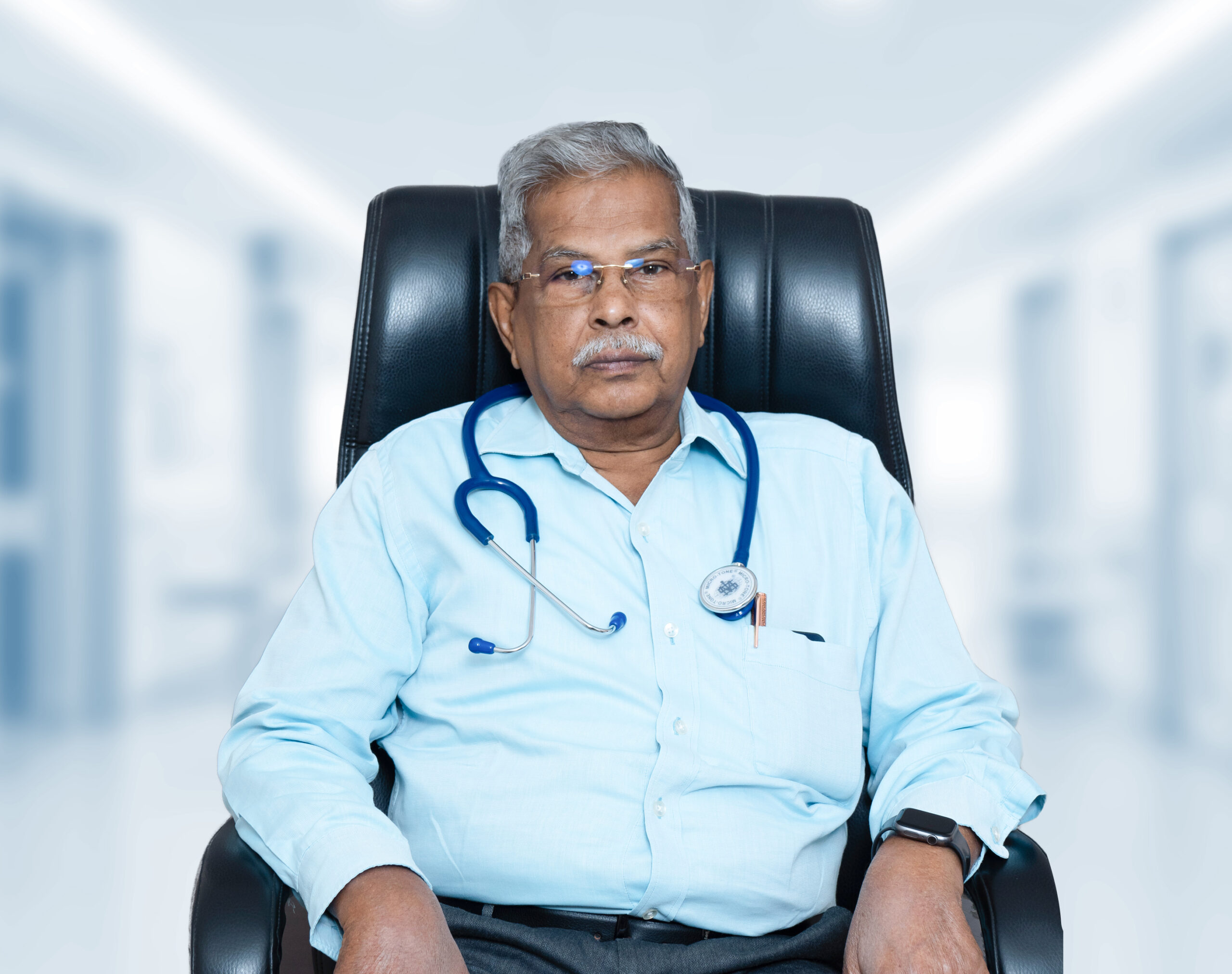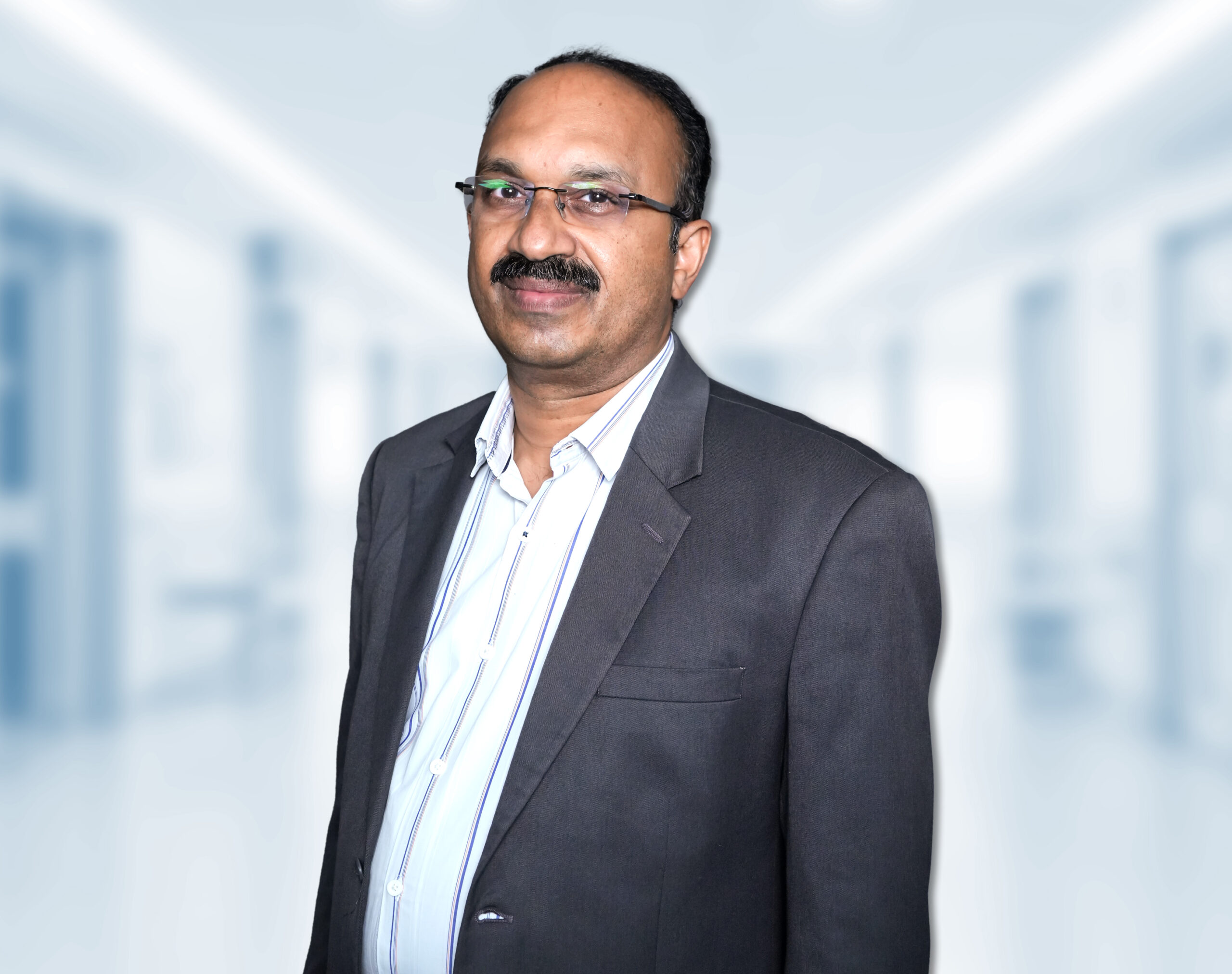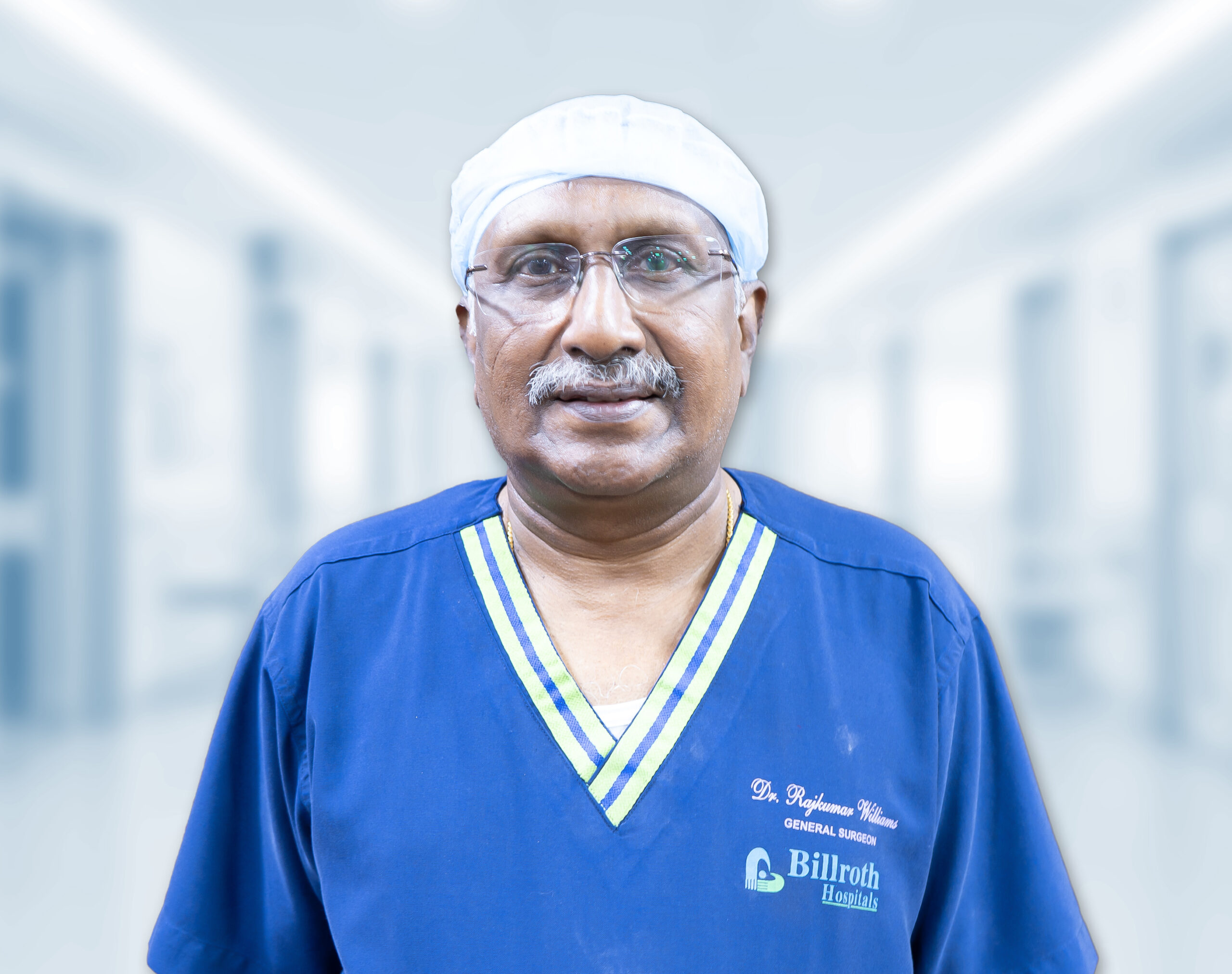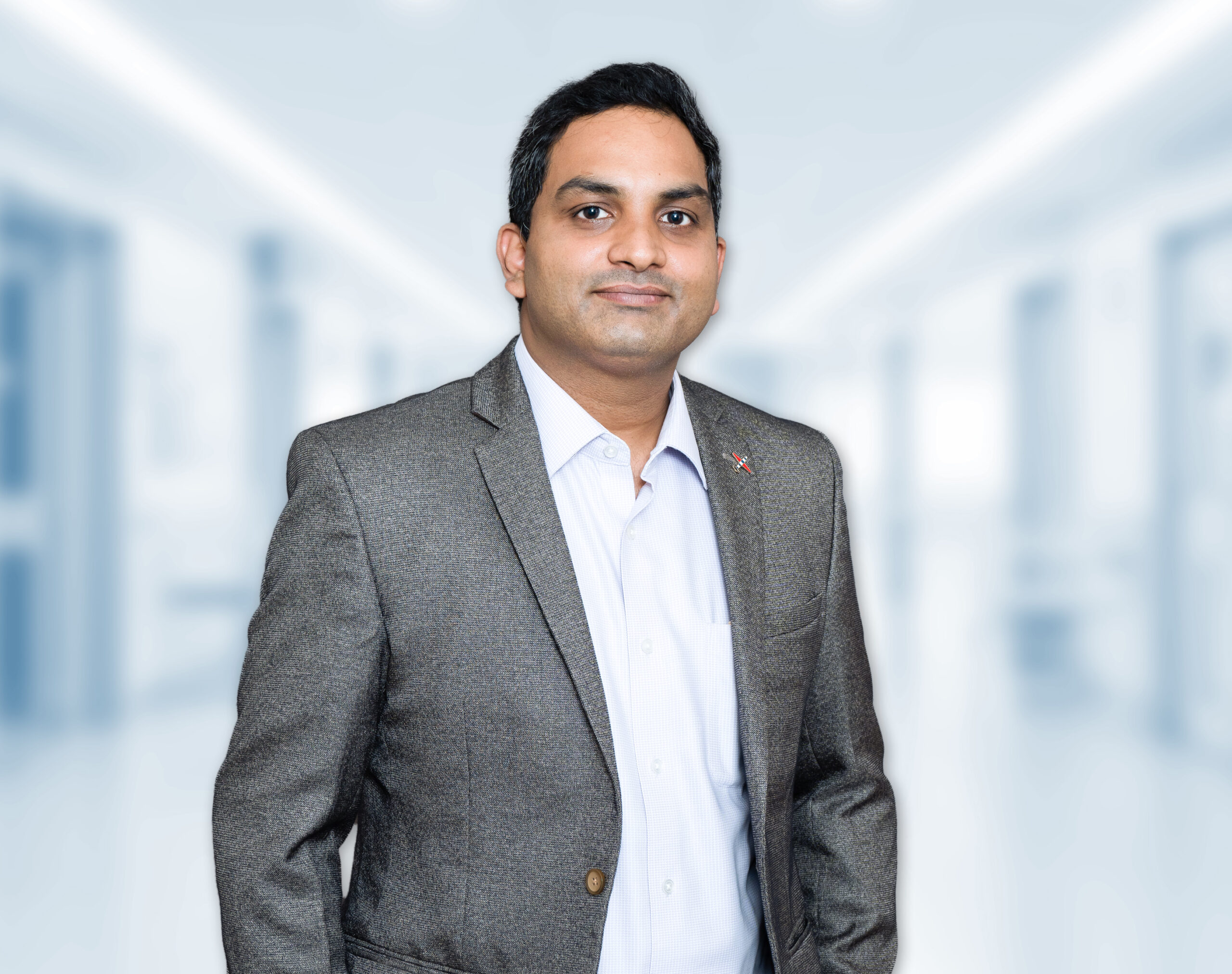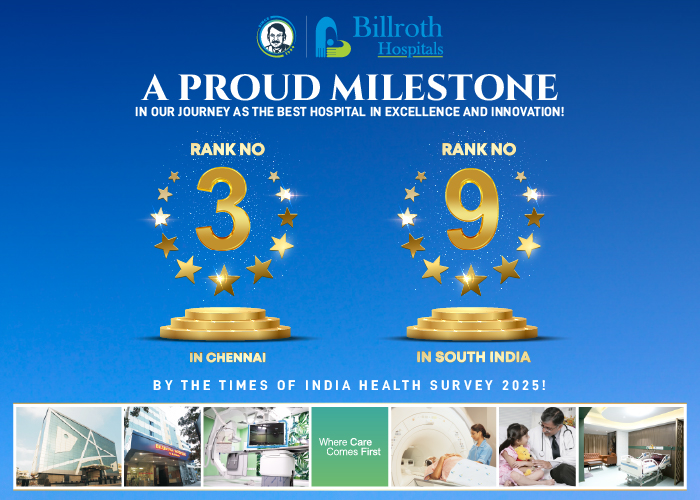- Overview
- Our Doctors
Department of Surgical Gastroenterology
Department of Surgical Gastroenterology has a legacy of clinical excellence which has been highly trusted since 1990. Founder Dr Jeganathan, a prominent Gastroenterologist devised remarkable LASER Procedures for the first time in south India. His majesty and and excellence in partial gastrectomy procedures known as “Billroth Operation” inspired the hospital name. Through various leaps and bounds Billroth Institute of gastroenterology has now evolved into surgical centre par excellence that provides comprehensive surgical solutions with unparalleled surgical acumen and latest technology.
Facilities
Get it done by the pioneers- Laparoscopy involves only very small cuts and incisions through which camera and surgical instruments are sent inside through the abdomen. The physician sees the proceedings that are magnified through a television monitor which makes the proceedings easier.
Advantages of laparoscopic procedures are
- Less post-surgical pain
- Fester recovery to normal condition
- Small sized incision
- Less hospital stay
Centre for Minimally invasive surgeries
Cholecystectomy
Cholecysteomy is the process of removal of infected gall bladder. Surgical method is a usual process. The traditional method of open cholecystectomy includes 5 to 8 inch incision into the abdominal area. The cut is made on the right side just below the ribs which extends to lower waist region.
Symptoms of cholecystitis are
- Severe pain in upper right abdomen
- Radiation of pain from right shoulder to back
- Nausea
- Vomiting
- Fever
- Tenderness over abdomen when it is touched
Appendectomy
Appendectomy is process name for removal of vermiform appendix. This invasive procedure is performed during emergency condition for patients suffering from appendicitis. Appendicitis is a major inflammation of appendix. Even though appendix has no function to perform, a diseased appendix when bursts can cause even death. Appendix may occur due to viral infection in the digestive track or the tube connecting the large intestine and appendix may be blocked. This causes infection in appendix which becomes acute when left untreated.
Symptoms of cholecystitis are
- Abdominal pain in the abdominal region
- Severe abdominal pain during walking and coughing
- Fever for a long time
- Loss of appetite
- Vomiting
- Constipation, etc.,
Fundoplication
Laparoscopic Fundoplication is a key hole surgery performed when acid reflux happens from stomach to the esophagus. This reflux causes burning sensation in the chest, night time coughing and abdominal pain. It can develop at any age and worsened with smoking habits, drinking coffee and also due to some painkiller drugs.
The surgical remedy for this problem is wrapping the bottom of esophagus and the top end of the stomach by placing a new valve. This valve plays the key role in not letting the acid to enter into the stomach. Diagnosis of acid reflux has three main steps which include:
- Endoscopy or gastroscopy to look into the insights of stomach.
- 24 hours ph supply, to know how often the acid enters the esophagus.
- Esophagus manomerty to check the pressure of esophagus
- Barium swallow x-ray is used occationally.
Heller’s Cardiomyotomy
Cardiomyotomy is an invasive procedure for a disorder called Achalasia. It is a severe condition in which the food from the esophagus is not propelled into the stomach. This occurs because the muscle (lower esophagus sphincter) in the lower end of the esophagus is tight and cannot open to push the food into stomach. As a result patients find difficulty in swallowing, there by very less food reaching the stomach which leads to loss of nutrition. Added to this the food from esophagus is returned back to mouth immediately due to adverse condition inside. Even drinking becomes a great difficulty. The problem is diagnosed by barium x-ray, gastroscopy or esophageal pressure test. The level of dysfunction varies from one patient to another. The only remedy is, to loosen the valve or divide it so that adequate amount of food passes in and swallowing becomes easy.
Laparoscopy is the best surgical procedure to regain the pumping action of esophagus in such cases. During the operation the lower esophagus sphincter high pressure is lowered and weakened by cutting the valve along its length so that food particles can easily travel inside. In some cases reflux may also happen due to the weakening of the valve. In such situation wrapping of valve is done by replacing another valve to assure that food from esophagus is passed in and no reflux occurs.
After the operation patients feel the improvement immediately in their swallowing action. They find no more difficulty in eating and drinking, however consuming heavy food must be avoided and following the advice of the physician is paramount.
Colectomy
Colectomy is a surgical resection of the large intestine. The colon or large intestine is the last part of the digestive track. In adults It is almost 4 to 6 feet in length. Colon soaks the water content and stores the waste food material. Rectum follows the large intestine. It is the process of removing either small part or the complete colon where the small intestine is directly connected to the rectum.
Colectomy is usually done to in case of diseases like cancer, polyps, irritable bowel disease, bleeding, blockage, volvulus, rectal prolapsed, diverculities, etc.,
Symptoms of the disease include bleeding from rectum, abdominal pain, new diarrhea, constipation, stool size, weight loss, anemia, cramping, vomiting, fever, etc.,
Tests which conclude colorectal diseases include blood test, colonoscopy, barium enema and CT scan.
There are 4 methods in this process which includes
- Right Hemicolectomy, process in which the whole of ascending colon and cecum is removed and the colon is reconnected to the small intestine.
- Left Hemicolectomy, a process in which the descending colon is removed and the remaining is connected to the rectum.
- Sigmoid Colectomy, a process in which either a part or full of sigmoid colon is removed, and the descending colon is connected to the rectum. In case of low anterior resection a part of sigmoid colon and rectum is removed and the descending colon is connected to the remaining part of the rectum.
- Abdominal Perineal Resection, is a process in which either a part or full of sigmoid colon and the entire large intestine, rectum and anus are removed. On such cases colostomy is usually performed. Colostomy is creating an opening in the stomach wall to let out the waste material.
During the laparoscopic procedure, four to five incisions are made of about 0.5cm and usually the abdomen is inflated using carbon dioxide. Usually among the incisions one is made bigger to remove the colon. Then the troc arcs of the laparoscopy are sent with the camera attached to view the insights through the monitor. The removal of rectum depends on the severity of the desease. Advantages of such surgery include
- Less pain from incision
- Faster recovery time
- Faster return to normal diet
- Faster return to normal activities
- Less hospital stay
- Fast healing of incisions.
Anterior resection is the procedure to remove a part or whole of the rectum. Rectum is the last part of the large intestine which stores stools before it gets ejected. Anterior resection is usually done for patients affected with rectal cancer or diverticular disease. Diverticular is a protrusion in the intestinal walls which creates pockets in the colon wall. The operation is performed as open or key hole surgery. The later is preferred now a days.
The key hole or laparoscopic surgery includes few small incisions in the tummy region. Telescope is sent through one of the incision and surgical instruments through the other. One of it is widened a bit to remove the infected rectum through it. After removing the rectum the surgeon joins the two healthy ends together with the surgical tool. In some cases stoma is formed about which the physician will decide. It depends on the amount of rectum removed, if a small part is removed then the heeling will be faster and when rectum is completely removed then stoma is made compulsory.
In anterior resection, stoma is usually formed on the right side of the abdomen. It is a bag like structure to collect the bowel waste. The rectum connection to anus is cut off during the operation and hence the stoma is needed factor. After it heals another operation is done to remove stoma and restore the normal function. It is a surgical process, in which the contents of the stomach or other gases are made to bypass directly into jejunum which is considered as the second part of the small intestine with a small tube. This tube helps the solid, liquid food material to directly move into jejunum, bypassing the duodenum, the first part of large intestine. One end of the tube is connected into the stomach and the other end into the jejunum.
This operation is done for people who suffer with stomach and duodenum block which happens as a result of stomach cancer or pancreatic cancer and who cannot properly digest the food due to blockage. In some cases a tube is connected to intestine and the other end outside the abdomen. Usually nutrition is fed through this tube into the intestine. This tube is referred as gj tube or feeding tube.
For the operation, the incision is made at the abdomen, below the ribs to reach the stomach. The cuts made during the operation are small and will heal faster. The patients are advised to inform doctors regarding their medication process and also they are advised to fast at least for 6 to 8 hours before the operation.
Centre for Hernia
These are few techniques used to do hernia repair.
- Totally Extraperitoneal (TEP)
- Extended totally extraperitoneal (eTEP)
- Intraperitoneal onlay mesh repair (IPOM)
The team has the expertise to do the surgeries by all possible techniques. Hence the most appropriate technique is used to ensure the best clinical outcome.
- Inguinal hernia
- Umblical hernia
- Incisional hernia
Centre for Proctology
- Fissure
- Fistula
- Rectal Prolapse
- Hemorrhoids
Centre for GI cancers
- Upper GI – esophageal cancer & stomach cancers
- Small Intestine – Jejunum cancers
- Hepato-Pancreato-biliary (HPB Cancers)
- Colon Rectum and Anal cancers
Centre for metabolic surgeries
- Bariatric surgeries
- Sleeve Gastrectomy
- Roux-en-Y
- Mini Gastric Bypass
General Surgery & Surgical Gastroenterology
Meet the Team – General Surgeon & Surgical Gastroenterologist Doctors in Chennai
